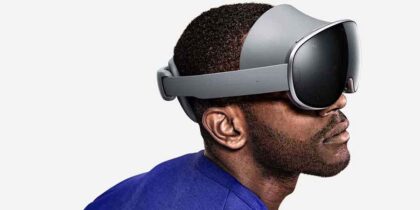The traditional perception of contact centers involves a number of people sitting in front of computers and speaking into headsets. These individuals answer call after call in almost a robotic way. But, thanks to mobile devices, this scenario may no longer have to be the case. Contact centers are changing rapidly due to the introduction of social media, online commerce and smartphones. Today, customers can tweet at their favorite brands or report issues via email. Brands that take advantage of social media and mobile contact centers will enable their staffs to better attend to customers’ needs. This is called the omnichannel customer experience, and it’s changing the way customers and retailers do business.
Adopting an Omnichannel Model
The term omnichannel has been used in marketing to describe the process of advertising across TV, radio and online. But increasingly the term encompasses all aspects of customer interaction, from marketing, sales and service. Although an omnichannel experience provides the same content or services across devices, a common misconception is that this means putting regular desktop applications onto smaller mobile screens. Rather, the omnichannel experience is centered entirely around the users’ experiences and making their transitions between devices as seamless as possible.
Many organizations are taking advantage of the omnichannel philosophy in their contact centers. According to a 2015 article in American Banker, Bank of America updated its apps this year so clients can now click to connect with an agent at a call center, while ATMs at other banks let clients videoconference with agents.
This renewed relevance of the next-generation contact center isn’t limited to banking either. In fact, mobile commerce is perhaps an even better driver of the trend. According to a 2014 article in eMarketer, while most retail transactions still take place at brick-and-mortar stores, smartphones are taking a more prominent role in the buying process. According to a 2013 article from the Massachusetts Institute of Technology, 80 percent of American shoppers look at prices on their smartphone before making a purchase. Companies that embrace mobile commerce will be able to participate in that research prior to the transaction, helping to guide purchase considerations.
Perfecting the Omnichannel Experience
One company that is known for enabling the omnichannel customer experience is Genesys. The technology firm was a pioneer in customer service from the early days of Computer Telephony Integration that pops up the customer’s name on the agent’s screen when they call. Today, it’s focused on customer journeys across channels and mobile interactions. By offering support for not just telephone-based call centers, but also handling of sales and service inquiries from online, phone, mobile (text) and social media, it seeks to present its clients as one company, not different ones that vary by channel.
Most service-oriented companies want the best customer experience across all channels. With growing expectations from customers, many businesses are looking for products to help propel an improved user experience and strengthen their offerings.
In this more mobile world, solution providers like Samsung Business can also help enterprises leverage mobility to connect the customer’s experience across every channel, to keep data secure and to engage customers on any device.








